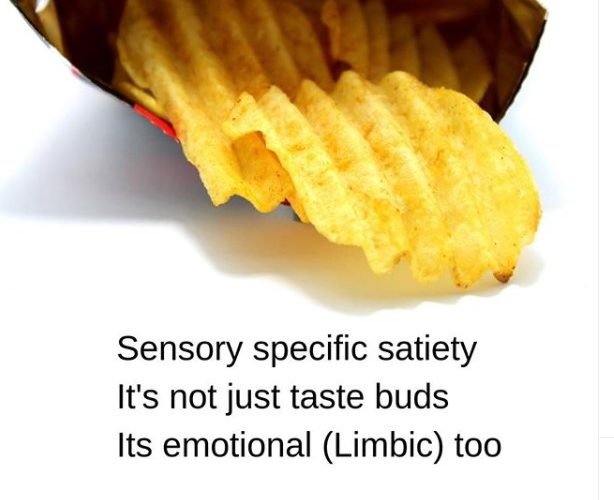Sensory-specific satiety: the relationship between perceived taste and quantity consumed of food.
As individuals consume more of a food item, they experience diminishing marginal taste perception, which means their level of perceived taste from additional consumption tends to decline (additional consumption becomes less pleasurable). The first bite of chocolate is better than the 10th.
In this study, researchers found that ratings went down after each piece of chocolate consumed with no significant difference in taste perceptions between normal and overweight participants reported. However, participants with obesity had higher levels of initial taste perception, rated subsequent pieces higher than their counterparts without obesity, and their ratings declined at a more gradual rate compared to participants with normal weight and those with obesity.
There is no significant difference in the actual taste perceptions, between those of normal weight and those who are overweight. However, participants with obesity have a greater initial satisfaction from food, which then decreases more gradually. To me, this suggests a significant pleasure or hedonic component to food, consistent with an addiction model of obesity.
Variations in Marginal Taste Perception by Body Mass Index Classification: A Randomized Controlled Trial. Journal of the Academy of Nutrition and Dietetics, 2019.
The experts in processed food addiction in Big Food often manipulate sensory-specific satiety to increase product sales.
It’s the explanation for the phenomenon of “I’m too stuffed to eat another bite. What’s for dessert?” or the 1960’s Lay’s advert “Betcha can’t eat just one!” in which you would eat the whole can of chips.






